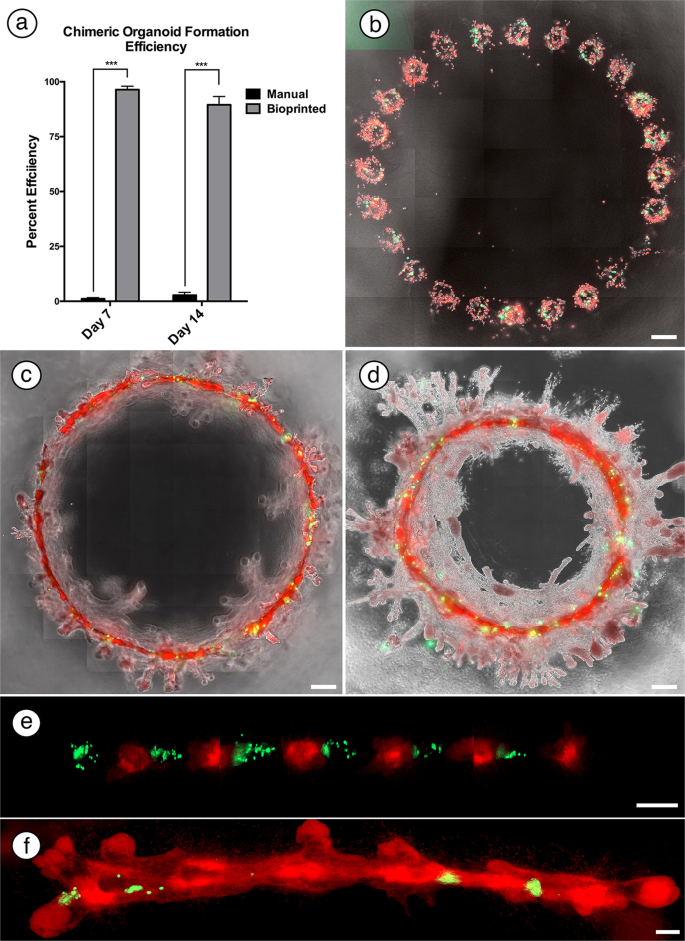3D Bioprinting of Organoids
3D Bioprinting of Organoids
Physics
A patented technology for creating functional human organoids using 3D bioprinting.
The patented technology utilizes a 3D bioprinting method to create functional human organoids, comprising a bioink composed of a mixture of cells and a hydrogel matrix. The bioink is formulated to mimic the native extracellular matrix of the target organ, allowing for optimal cell proliferation, differentiation, and organization. The bioprinting process involves the deposition of the bioink in a controlled manner, using a combination of pressure and temperature to create a precise architecture. The resulting organoid is then cultured in a bioreactor, where it is subjected to mechanical and biochemical stimuli to promote maturation and functionality. The technology also includes a proprietary algorithm for designing and optimizing the organoid's structure and composition, taking into account factors such as cell type, organ geometry, and mechanical properties. This approach enables the creation of complex, functional organoids that can be used for a range of applications, including disease modeling, drug testing, and regenerative medicine. The patented technology has demonstrated significant improvements in organoid viability, functionality, and reproducibility, making it a valuable tool for researchers and clinicians. The bioprinted organoids have been shown to recapitulate key features of native organs, including tissue architecture, cellular heterogeneity, and functional activity. Furthermore, the technology has the potential to revolutionize the field of organ transplantation, enabling the creation of functional, transplantable organs for patients in need. Overall, the patented technology represents a significant advancement in the field of 3D bioprinting and organoid research, with far-reaching implications for basic research, translational medicine, and clinical practice.
Regenerative medicine: The creation of functional human organoids using 3D bioprinting can revolutionize the field of regenerative medicine by providing a reliable source of functional cells, tissues, and organs for transplantation, thereby addressing the shortage of organs available for transplant and potentially saving thousands of lives.
Personalized medicine: This technology can enable the creation of personalized organoids for individual patients, allowing for the testing of drugs and treatments in a controlled, patient-specific environment, which can improve treatment outcomes and reduce healthcare costs.
Disease modeling: 3D bioprinted human organoids can be used to model various diseases, such as cancer, neurological disorders, and cardiovascular disease, enabling researchers to study disease progression and develop more effective treatments.
Toxicology testing: The use of 3D bioprinted organoids can replace traditional animal testing for toxicology studies, providing a more accurate and reliable method for assessing the safety of pharmaceuticals and chemicals.
Tissue engineering: This technology can be used to create functional tissue substitutes for repairing or replacing damaged tissues, such as skin, muscle, and bone, which can improve the treatment of injuries and diseases.
Pharmaceutical development: 3D bioprinted organoids can be used to test the efficacy and toxicity of new pharmaceuticals, enabling the development of more effective and safer treatments.
Space exploration: The ability to create functional human organoids using 3D bioprinting can have significant implications for long-duration space missions, where the availability of functional organs and tissues for transplantation may be limited.
Cosmetic and reconstructive surgery: This technology can be used to create customized tissue substitutes for reconstructive surgery, such as breast reconstruction, and for cosmetic procedures, such as skin rejuvenation.

World Health Organization (WHO)
Software
View Patent
